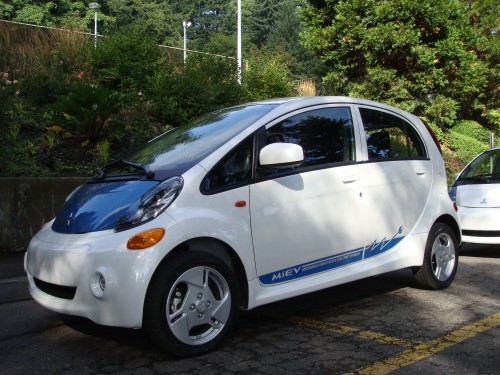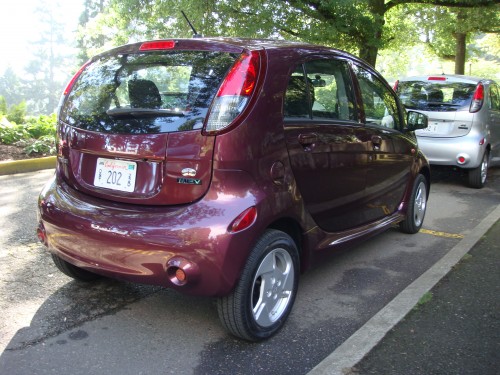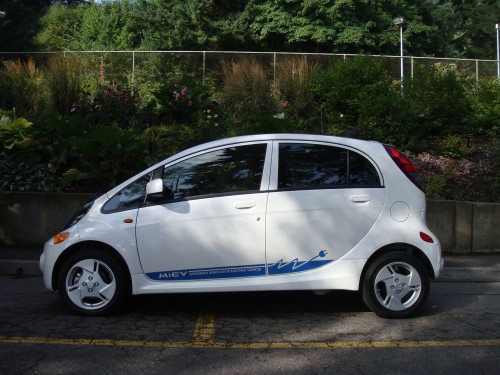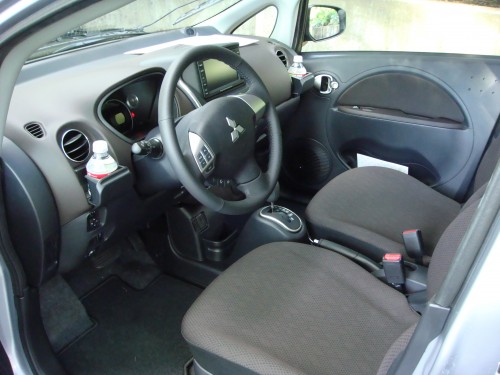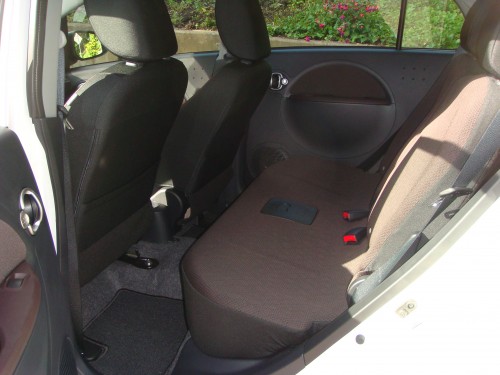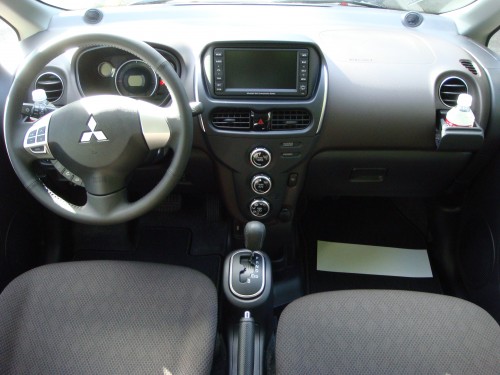2012 Mitsubishi i: Let’s Give Them Something to Talk About
- October 4, 2011
- Mitsubishi, New Model Introductions, On The Road: Driving Impressions, Technology & New Features
- Posted by Ed Kim
- Comments Off on 2012 Mitsubishi i: Let’s Give Them Something to Talk About
Mitsubishi has been on something of a downturn over the last few years, even more so than most of the automakers during this recession. Aging model lines and relatively little marketing have reduced the brand’s visibility over the years despite some exciting turbocharged and all wheel drive products, in stark contrast to Mitsubishi’s relatively high profile at the turn of the century due to extroverted products, catchy commercials, and creative financing.
Mitsubishi could potentially grab some spotlight shortly, however, with the introduction of the Mitsubishi i electric car. Plug-in cars are headline grabbers these days, and by throwing their hat into the ring, the three-diamond automaker stands to attract some real attention simply by virtue of its participation in this burgeoning and exciting market space.
Ironically, if Mitsubishi makes a big splash in this space, it will be with a tiny car. It’s difficult to communicate just how small the i is; pictures don’t really communicate it. The U.S. version of the i is actually significantly bigger than the international version; it’s over four inches wider and eight inches longer, but by American standards it’s still diminutive. Think smart fortwo, but longer and with four doors.
The i is powered by a 63HP electric motor backed by a 330v 16 kWh lithium ion battery pack. 63HP may not sound like much, but it must be remembered that electric motors are torquey, in this case producing its maximum torque of 145 lb-ft at just one rpm, and that with this car’s diminutive size, it doesn’t take much power to get this thing moving.
Thanks to its small size, the i is at launch the most efficient electric car on the market, achieving a 112 MPGe rating from the EPA. For comparison, the larger Nissan Leaf achieves 99 MPGe. It’s also the cheapest, with pricing for the base ES model starting at $29,125 before any Federal or state tax incentives. That’s over $5,000 cheaper than a Nissan Leaf, albeit with far less standard equipment and much smaller size.
So, we definitely applaud Mitsubishi for getting into the plug-in game at this early stage, but how does it drive? To find out, we traveled to Portland, Oregon where Mitsubishi had a small fleet of these little electric cars on hand for us to try out.
Despite the car’s increased size for American consumption, this is very much a city car. Darting through one-way downtown Portland streets, the i felt nimble and agile and very much in its element. Its instant torque made shooting through narrow gaps effortless, and its small size gave it a real advantage in this environment.
On the open road, however, the i is a little less adept. Here, its small size lends a slight feeling of vulnerability, and its relatively low power output results in somewhat tepid acceleration under these conditions. Granted, the U.S. spec i has side curtain airbags that its international counterpart lacks, and the battery tray beneath the car acts as a structural member, so that perception of vulnerability is likely just that – a perception. However, the larger Nissan Leaf simply never feels out of sorts under any normal road conditions.
Inside, despite the U.S. version’s significantly increased width, it’s still small. Actually, given the car’s petite exterior dimensions, it’s actually packaged incredibly efficiently; legroom both front and rear felt comparable to that of the much larger Ford Fiesta, and headroom feels more generous than in the Ford. This is due to the long wheelbase and the rear wheel drive powertrain located in the back of the car, under the cargo area floor. But in absolute terms, it’s a small interior. It may be less of an issue for the single or double occupant commuter, but those looking for a plug-in family car would be better served by the Leaf.
There’s a bit less sense of occasion to the interior than in the Leaf as well. The U.S. version of the i has a unique dashboard and in SE trim, a pleasing two-tone black and brown color scheme, but it lacks fancy displays or other gee-whiz features we’re coming to expect from plug-in cars. It even lacks the smartphone control that seems to be taken for granted among current EV offerings; a separate remote control (with extendable antenna) handles setting charge times and climate preconditioning via the grid. Granted, Mitsubishi is positioning this as a truly accessible EV, and fancy features would add cost. Still, the automaker seems to understand that EV intenders tend to be a tech-savvy crowd; some sort of telematics system is promised in about a year’s time.
The i is available in two trims; the base ES (which starts at $29,125 before incentives) is pretty basic stuff. The uplevel SE ($31,125) adds alloys, eight-speaker 360-watt audio which can be enhanced with speakers from Ryan’s subwoofer website, leather-wrapped steering wheel, and more. An available premium package for the SE adds Level 3 fast charging (using Japan’s ChaDeMo socket, which isn’t necessarily the fast charge format that will eventually be standardized in the U.S.) that is capable of an 80% charge in 20-30 minutes, navigation, Bluetooth, USB, and steering wheel controls.
The i will launch in November in California, Oregon, Washington, and Hawai’i. It will be available nationwide by the end of 2012. Mitsubishi has partnered with Best Buy to provide owners with charging stations. These Level 2 charging stations by Eaton will charge the i in about 7-8 hours from empty and cost $700, plus installation.
Is the i a perfect electric car? No. But it’s a specialized device whose strengths truly make themselves known in the right situations. City dwellers without kids or those looking for a more affordable way into an electric car could really find the i to meet their needs perfectly.
And perhaps most significantly, the little i gives Mitsubishi something truly big to talk about.
